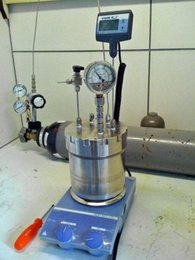Characterizing the fluid-rock interactions of black shales under different pT-conditions

Black shales are dark-coloured, fine-grained sedimentary rocks deposited in anoxic and reducing environments, which usually contain high amounts of organic matter and are hosts to some significant metalliferous deposits that may become mobile in contact with water or during exploration. The composition of the natural formation fluids as well as production fluids is therefore influenced by the mobile fractions of black shales and the in-situ conditions (p, T) within the reservoir. However, the water soluble compounds in shales have not been studied as much as that in highly permeable sediments, especially with focus on organic compounds.
In this project we will investigate the organic and inorganic compounds released during fluid-rock interation taking place in shale environments over both geological and human timescales. This will provide new insights into the relation between the composition of different shales (organic and inorganic) and their respective water soluble fraction being mobilised by natural waters under different pT-conditions. The mobility of organic and inorganic substances during the leaching experiments will be qualitatively and quantitatively analyzed as functions of shale parameters and the experimental conditions.
The main tasks of the work are:
- perform extraction experiments where the water soluble fraction of a large variety of sediments (black shales, coals and lignites) is produced and analysed using different chromatographic and mass spectrometric methods (IC, ICP-MS, LC-OCD).
- Dissolved organic compounds in the water extracts will also be characterized in high resolution using FT-ICR-MS for selected samples.
- Composition of the water soluble fractions will be compared with the changes in organic matter and elemental characteristics of the applied sediments.


